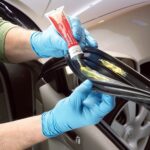Car repossession is a harsh reality for millions of Americans. When financial difficulties arise, one of the first assets at risk can be your vehicle. Understanding which vehicles are most frequently repossessed can shed light on broader economic trends and inform consumers about potential risks associated with auto loans and certain vehicle choices. Let’s delve into the data and uncover what cars get repo’d the most and the underlying factors contributing to this concerning issue.
Car Repossession Statistics: A Snapshot
The sheer volume of car repossessions in the United States is staggering, highlighting a significant challenge for both individuals and the economy. Recent data paints a stark picture:
- Millions of Vehicles Repossessed Annually: Approximately 2.2 million vehicles face repossession each year. This updated figure underscores the widespread nature of this problem.
- Daily Repossession Rate: This translates to a staggering 5,418 repossessions occurring every single day across the country.
- Hourly and Minute Rates: Broken down further, we see 226 cars repossessed every hour, and alarmingly, almost 4 cars (3.76) repossessed every minute.
These numbers emphasize that car repossession is not a rare occurrence but a constant and pervasive issue affecting thousands of vehicle owners daily.
Top Cars and Trucks Frequently Repossessed
While repossession can affect any vehicle if loan obligations aren’t met, certain models appear more frequently on repossession lists. Data from 2021-2022 reveals the following vehicles as being most commonly repossessed:
- Ford F-150: Leading the list, the Ford F-150 is the most repossessed truck, likely due to its popularity and high sales volume.
- Chevrolet Silverado: Following closely, the Chevy Silverado is the second most repossessed truck, mirroring the F-150’s market presence.
- Honda Civic: The Honda Civic tops the list for cars, indicating that even fuel-efficient and reliable sedans are not immune to repossession.
- Honda Accord: Another Honda model, the Accord, is the second most repossessed car, suggesting a trend within the brand or perhaps broader economic factors affecting sedan owners.
- Toyota Camry: Continuing the trend of popular sedans, the Toyota Camry also appears high on the repossession list.
- Nissan Altima: The Nissan Altima is another mid-size sedan that is frequently repossessed.
- Toyota Corolla: Similar to the Civic, the Toyota Corolla, a compact and economical car, also faces high repossession rates.
- Honda CR-V: The Honda CR-V, a popular SUV, indicates that vehicle type doesn’t necessarily shield owners from repossession risks.
- Dodge Ram: Rounding out the list is the Dodge Ram, another popular truck model that experiences significant repossession numbers.
It’s important to note that the presence of these vehicles on the list doesn’t inherently mean these are “bad” cars or brands. Instead, their high repossession rates are likely correlated with their popularity and sales volume. More vehicles of these models on the road naturally mean a higher statistical chance of some facing repossession when borrowers face financial hardship.
Factors Contributing to Repossession Rates
Beyond specific models, broader economic trends and lending practices contribute significantly to car repossession rates.
- High Auto Loan Debt: Americans carry a substantial amount of auto loan debt. In 2018-2019, auto loans totaled a massive $568.6 billion. This high debt burden makes many individuals vulnerable to repossession if they encounter financial setbacks.
- Easy Access to Loans: The article suggests a potential issue with easy access to auto loans, possibly leading to individuals taking on debt they cannot realistically manage. This can result in higher default rates and subsequent repossessions.
- Economic Pressures: Economic factors play a crucial role. While unemployment rates may fluctuate, other economic pressures, such as rising living costs or unexpected expenses, can make it difficult for individuals to keep up with loan payments.
- 90-Day Default Window: Repossession can begin relatively quickly after loan default, often within 90 days. This short window can leave little room for borrowers to recover financially before repossession proceedings begin.
- Subprime Lending Concerns: The reference to high interest rates (20%) hints at subprime lending practices, where loans are extended to borrowers with lower credit scores at higher interest rates. These loans carry a greater risk of default and repossession.
Understanding the Repo Man and the Scale of the Problem
The original article vividly describes the repossession industry’s scale and efficiency. The mention of “10,000 repossession opportunities” in Chicago each night illustrates the immense operational scale of repossession agencies. This highlights that repossession is a well-organized and unfortunately, necessary part of the auto finance industry when borrowers are unable to meet their obligations.
Conclusion: Responsible Borrowing and Awareness
Understanding what cars get repo’d the most is less about specific car brands being problematic and more about understanding broader economic trends and responsible financial behavior. The high repossession rates underscore the importance of:
- Responsible Borrowing: Carefully evaluating your financial situation before taking on an auto loan and ensuring you can comfortably afford the monthly payments.
- Understanding Loan Terms: Thoroughly understanding the terms of your auto loan, including interest rates, repayment schedules, and repossession policies.
- Financial Planning: Creating a solid financial plan that includes budgeting for car payments and having contingency plans for unexpected financial challenges.
While owning a vehicle is essential for many, it’s crucial to approach auto loans with caution and awareness of the potential risks, including repossession. By being informed and financially responsible, consumers can minimize their risk and maintain vehicle ownership without facing the distress of repossession.


